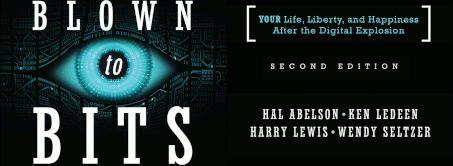The Fairness Doctrine
Sunday, December 7th, 2008 by Harry LewisThat’s the name of rule, no longer in force, requiring political balance in radio broadcasting. As the right has come to dominate talk radio and the left has taken control of both the executive and legislative branches of the federal government, talk of reinstating the doctrine is on the rise. George Will has an excellent column today making that case that the doctrine would, most likely, prove to be unconstitutional. After all, the First Amendment doesn’t say that the federal government should guarantee that all sides are heard; it says that the government has to stay out of deciding what should be heard.
Will notes that part of the rationale for the fairness doctrine was the scarcity argument — that there was only so much radio spectrum so the government needed to have some rules for allocating it. As he states,
The court’s 1969 ruling relied heavily on the scarcity rationale. But Brian Anderson and Adam Thierer, in their book “A Manifesto for Media Freedom,” note that today there are about 14,000 radio stations, twice as many as in 1969, and 18.9 million subscribers to satellite radio, up 17 percent in 12 months; 86 percent of households with either cable or satellite television receive an average of 102 of the 500 available channels. Because daily newspapers are much more scarce than are radio and television choices, should there be a fairness doctrine for TheNew York Times?
I haven’t read the Anderson-Thierer book (but I should: Thierer wrote a nice review of Blown to Bits). But the numbers Will quotes are only part of the reason why the scarcity argument is bogus. The way the radio spectrum is divided is an artifact of 1930s radio engineering. There are much more efficient methods today — without which it would have been impossible for most people to have their own radio station, in the form of a cell phone. As we say in Chapter 8,
There is no reason to re-establish a “Fairness Doctrine,” like that which until 1987 required stations to present multiple points of view. If there were more channels, the government would not have any need, or authority, to second-guess the editorial judgment of broadcasters. Artificial spectrum scarcity has, in the words of Justice William O. Douglas, enabled “administration after administration to toy with TV or radio in order to serve its sordid or its benevolent ends.” Justice Frankfurter’s claim that “there is no room in the broadcast band for every business or school of thought” is now false.
To get broadcast regulation right, you need to know the history and you need to know the engineering. That’s the story we tell in Chapter 8 of Blown to Bits, a remarkable drama in which Marconi, John Romulus Brinkley, Hedy Lamarr, Felix Frankfurter, and Claude Shannon all play their parts. I hope Obama’s team knows the story.
